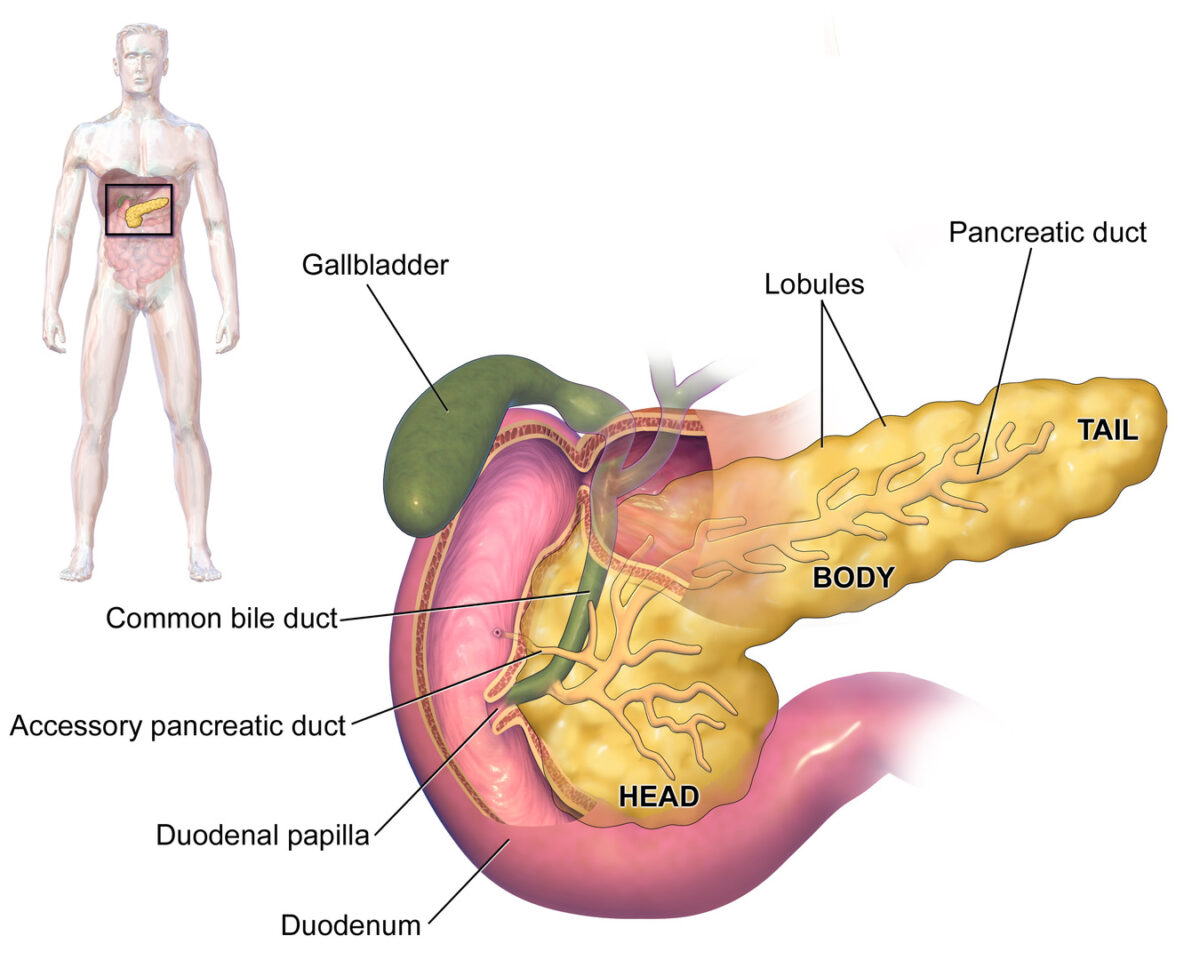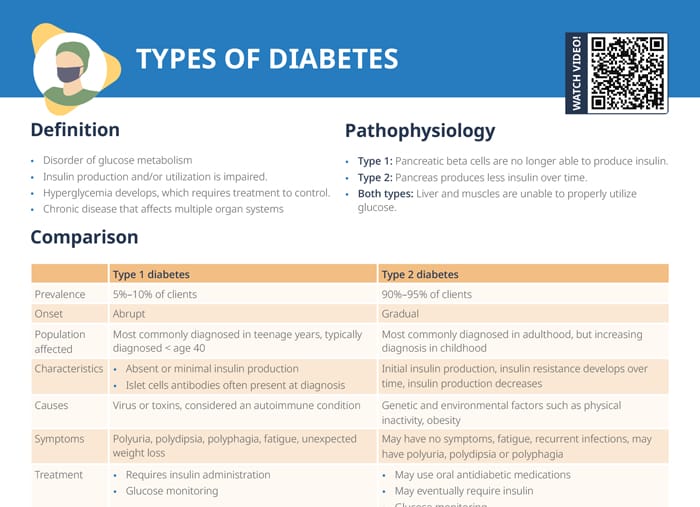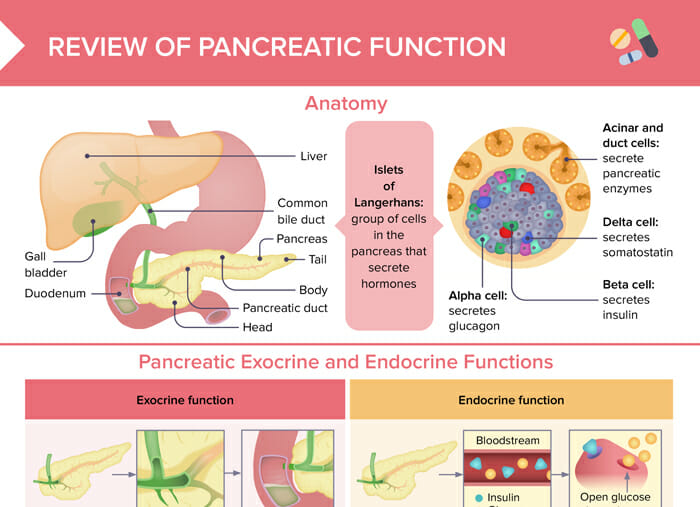What is the pancreas?
The pancreas is a complex organ located in the upper abdomen, behind the stomach. It’s about 6 inches long and has a leaf-like shape. It has two primary functions: endocrine and exocrine.
Any issues or diseases affecting the pancreas, such as pancreatitis, pancreatic cancer, or cystic fibrosis, can impact these functions and lead to serious health complications.

Anatomy of the pancreas
Image: “Blausen 0699 PancreasAnatomy2” by Blausen. License: CC BY 3.0What are the exocrine and endocrine functions of the pancreas?
Endocrine function of the pancreas
The pancreas contains clusters of cells called islets of Langerhans, which produce important hormones (insulin and glucagon) that control glucose levels. An imbalance in the production of these hormones can lead to conditions like diabetes.
Exocrine function of the pancreas
The majority of the pancreas comprises exocrine glands and ducts. These produce pancreatic enzymes, including amylase and lipase, which are essential for the digestion of proteins, carbohydrates, and fats. These enzymes are secreted into the small intestine via the common bile duct.
Related videos
What are the Islets of Langerhans?
The Islets of Langerhans are a group of cells in the pancreas that secrete hormones such as insulin, glucagon, and somatostatin.
Which hormones and enzymes are released by the pancreas?
- Exocrine:
- Lipase
- Amylase
- Endocrine:
- Glucagon
- Insulin
- Somatostatin
What is the role of insulin and glucagon in glucose regulation?
Insulin and glucagon work together to regulate glucose levels in the bloodstream.
Insulin lowers blood glucose levels by opening glucose channels, while glucagon raises blood glucose levels.
What is the function of pancreatic enzymes?
Pancreatic enzymes break down proteins, fats, carbohydrates, and nucleic acids, as well as electrolytes and a small amount of mucus in the duodenum.
What is somatostatin?
Somatostatin is a hormone secreted by delta cells in the pancreas that inhibits glucagon and insulin secretion.
Common pancreatic disorders
- Acute pancreatitis: sudden inflammation of the pancreas; symptoms: severe abdominal pain, nausea, and vomiting
- Chronic pancreatitis: long-lasting inflammation of the pancreas, often caused by long-term alcohol abuse
- Pancreatic cancer: often hard to detect early, typically poor prognosis
- Diabetes mellitus: due to the pancreas’ inability to produce sufficient insulin (Type 1) or the body’s inability to utilize insulin properly (Type 2)
- Cystic fibrosis: genetic disorder that can cause the buildup of sticky mucus in the pancreas, blocking the release of digestive enzymes and leading to malnutrition
- Pancreatic cysts: pockets of fluid on or in the pancreas (can be benign or malignant)

